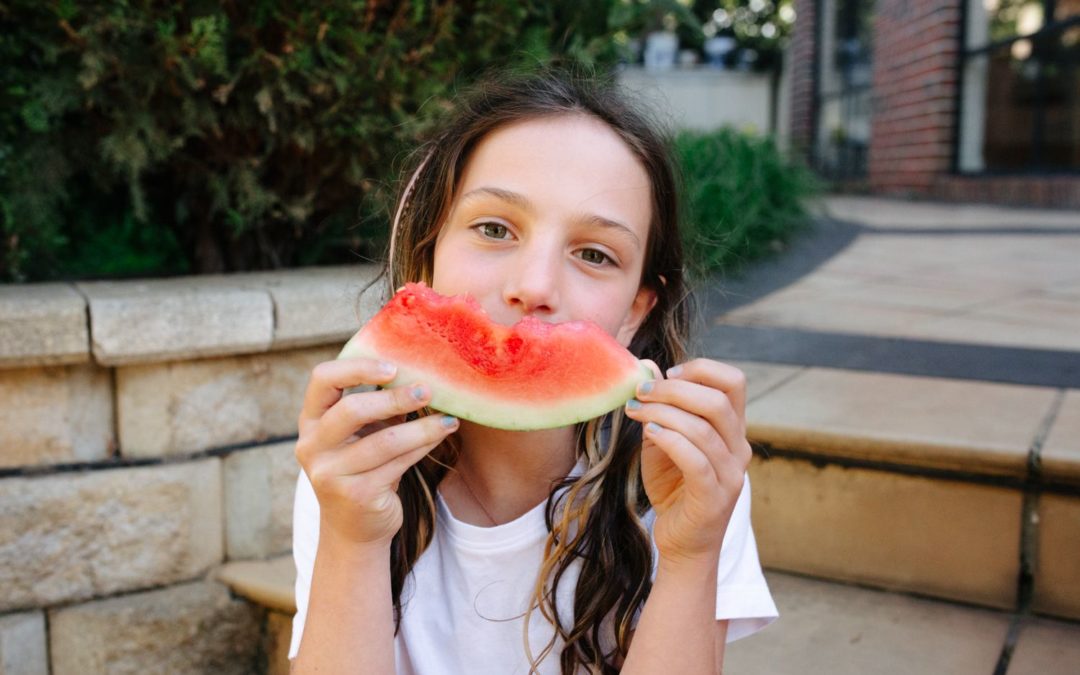Staying Calm at Mealtimes
When it comes to feeding children, one of the most powerful things you can do to help kids learn to eat a variety of food and to have a positive relationship with food is create a happy environment for them to eat in. While this sounds easy, we know that staying calm at mealtimes can be hard. Parents and caregivers are under lots of internal and external pressure when it comes to feeding their families. That teamed with children who don’t always feel like eating what you serve them can be a recipe for mealtime chaos.
Understanding why you need to stay calm at mealtimes
When your child is feeling stressed at the table, their stress hormone, cortisol rises. High levels of cortisol reduces a kid’s appetite making them less likely to eat. This is why it is so important to stay calm at mealtimes. We need to try and control our own stress, so our children can also remain calm. For children, new foods can be scary. They also may have had previous negative experience with a food, so seeing it again is stressful. In order for a child to try new foods and eat according to their hunger, they need to eat in a calm environment. So here are some of our favourite ingredients for staying calm at mealtimes.
1. Think about why you are stressed
It is important to think about what stresses you about your child’s eating at mealtimes. Is it that you are worried that they will not sleep if they are hungry? Are you worried that they will be underweight if they don’t eat a meal? And you worried they will not eat the meal you make?
Being aware of why you get stressed about your child’s eating can really help you to adjust the expectations and attempt to stay calm at mealtimes.
2. Adjust your goals
Rather than aiming for a child who eats everything… try and aim for a child who enjoys being at the table. Who will sit at the table. Who will try things, sometimes.
Rather than worry about what your child is eating, change your focus to, is the mealtime environment a calm one (more later)?
3. Follow a division of responsibility
As parents, we often think it is our responsibility to ensure our children eat ‘perfectly’ (whatever that means?!?). But are we taking on too much? Causing stress to ourselves and our children?
Feeding and learning to eat is actually a shared responsibility. Where parents provide the food, but trust their children to listen to their bodies and decide what to eat (from that choice) and how much.
PARENTS’ RESPONSIBILITY: Provide food at regular intervals (you choose what is on offer and when)
CHILD’S RESPONSIBILITY: To eat or not to eat, and how much to eat of each item
Learn more about Ellyn’s Satters division of responsibility model here.
4. Always serve a liked food
Giving your child a variety of foods and exposing them to new foods is so important to helping your child to try new foods. If you are serving something new aim to have a food on the plate that you know they like and will eat (aka ‘a safe food’). This helps reduce your child’s stress when the meal is served and they are then more likely to also try the new food.
5. Serve new foods on a different plate
If you child has a meltdown when new foods are served on their plate, this may be a sign of food aversions. If you have a child like this, then serving a new food on a separate plate or dish can help them becoming comfortable with a food whilst realising they will not be forced to eat it.
6. Try serving family style
Family style is when you put the food in the middle of the table for everyone to serve from, rather than serving it up already on plates. This is the division of responsibility in action. Each person is then able to choose what goes on their plate.
In the beginning children may only choose their favourite foods, but be patient (and without pressure) and in time most children will start to give new items a try.
7. Shift your focus
Instead of tracking what your child eats, aim to make a relaxed and happy eating environment. Set the table with some flowers or candle. Ask your child to choose their favourite dishes to eat from. Sit with your child and chat. You want your child to feel like the table is a happy place to be.
8. Notice your emotions and breath before you start
When you eat together as a family, you are more likely to be distracted with your own eating to notice what your child is doing. The more you focus on your child’s eating (or lack of eating) the more likely you are to stress. Be aware of this and when you feel yourself getting upset at your child’s lack of eating, take a deep breath, have a bite of your own food and remember that you need to stay calm at mealtimes
9. Enjoy Family Meals
Do you start to stress out when offering meals to your child? Take a moment to check in with yourself before serving dinner (I know this is hard). Take a breath before serving dinner. Remind yourself that you are doing your responsibility. Try and relax and eat with your child. Show that you are enjoying dinner. That the dinner table is more than food, it is a place to share and enjoy time together.
So which tip are you going to try first to help you to stay calm at mealtimes? Let us know how you go.
Note: If you are overly concerned about your child’s intake, they are unwell or have a very limited diet please contact a family or peadiatric dietitian or speech pathologist specialising in feeding.
This blog is a collaboration between Kate Wengier, Foost family dietitian and Dr Jennifer Cohen, a peadiatric dietitian from the fussy eating doctor










